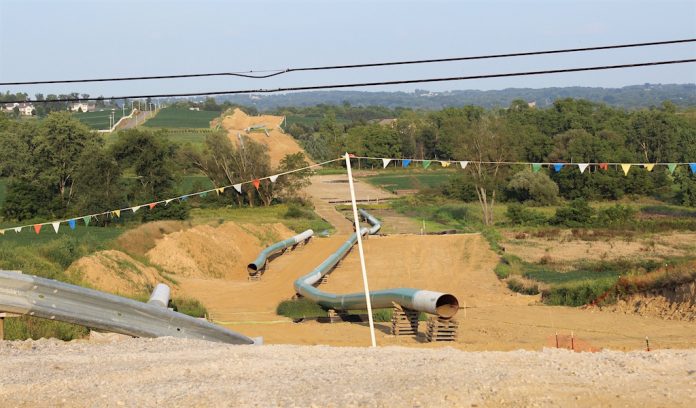LONDON, Ohio – Pipeline leases and easements are hot on the minds of many Ohio farmers and Dale Arnold, director of energy policy at Ohio Farm Bureau, is addressing their concerns at the Farm Science Review.
While some pipeline projects, such as the ET Rover and Nexus, are wrapping up, producers are wondering what rights they have during and after construction.
After the construction leaves and the ground has been recovered and replanted with grass seed, there is still a potential for the ground to settle and sinkholes to form. So what can you do about it?
Read your lease
As a landowner, you do have rights to your land, explained Arnold. But, the key is to know your lease agreement, said Arnold.
If you don’t have a copy of your land easement, you can get a copy from the county recorder’s office.
Photograph it
“Even though there is construction going on, you still have a right to be on the land,” said Arnold.
Take photos of the land where construction is taking place, take pictures of the trucks and equipment, with the name of the equipment displayed on the side for future reference.
Compaction has been an issue for many farmers after the construction company leaves a pipeline site, explained Arnold. Having photographic evidence of the site, taking photos of open ditches and exposed tiling, can help you prove damage has been done.
“If there is any potential damage, get a good soil technician to assess the potential compaction,” said Arnold.
The company has a responsibility to restore the land after construction. While the company may put down new grass seed and the ground may look nice from above, the farmer may not be seeing the compaction taking place below the soil surface, he explained.
When you do decide to go back and make a claim on damaged land, you will have the photographic evidence to back up your claim.
Some farmers are starting to see companies mowing around wellheads, up to a 60-foot radius, taking out crops within that radius.
The question arises, are producers entitled to any crop damage from that mowing and the answer is, yes, said Arnold. “Take a picture of that.”
“Producers are entitled to fair and just compensation for any crops taken out,” he said.
Making a claim
“If you do need a repair or remediation, there will probably be an 800 number for you to report a claim,” said Arnold. By state and federal law, the company has to provide you that service he explained.
Once you make that call, the clock starts and if someone does not respond to your claim within 48 hours, it goes to a state or federal regulation commission.
Other things to note
Take down the names and contact information of any companies that cross your land during the construction process.
For areas undergoing new leases for future pipeline projects, make sure you have a good understanding of the lease or agreement you are signing and what rights you have after you sign on the line.










